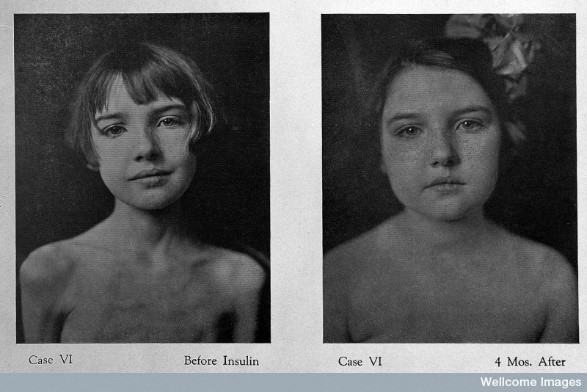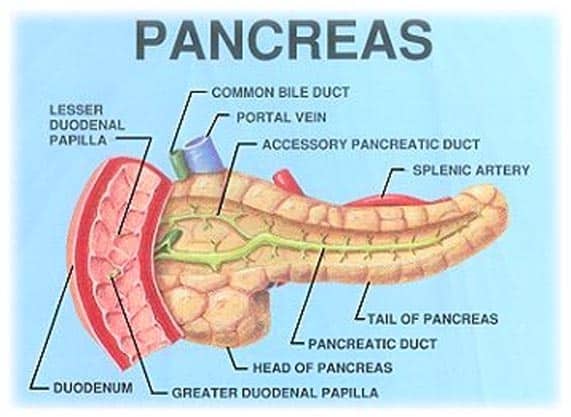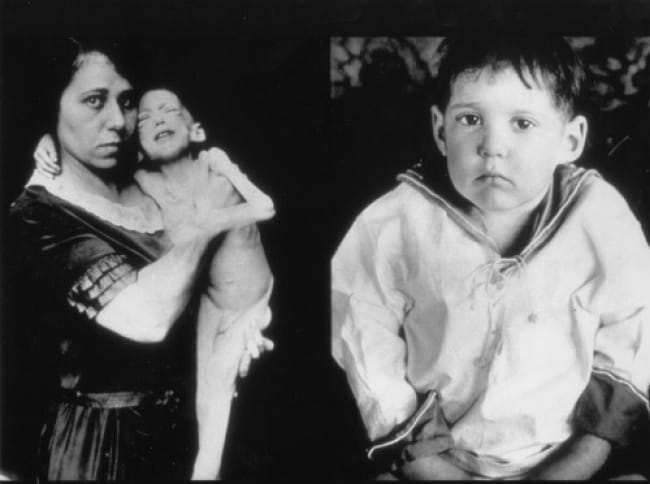
Before the life-saving treatment of insulin was discovered, diabetes was a disease that many people feared they would get. They feared it, because the diagnosis of diabetes was fatal, it meant they would most certainly die soon, in the near future.
Not much was known of diabetes before the discovery. Doctors knew that sugar would only worsen diabetic patient’s conditions, and the most effective treatment at the time was a limited diet, also known as a starvation diet. By reducing their sugar intakes to the bare minimum, patients were able to extend their lives by a few extra years. Sadly, these extra years were not full of life and happiness for them. They slowly became worse, and often times they died of starvation before they succumbed to the effects of the disease itself.
Contents
History of Diabetes Research
In the 19th century, when patients died from complications from diabetes, doctors were able to conduct an autopsy which showed significant damage to their pancreas. In the year 1869, Paul Langerhans, at the time a German medical student discovered that inside the pancreatic tissue were clusters of cells in which digestive juices were produced. The function of these cells were unknown during this discovery. Eventually however, some of these cells were found to be the beta-cells, which produce insulin. To honor the student that made this huge discovery, these cell clusters were called the “Islets of Langerhans”.
While this discovery in 1869 was huge in diabetes research, it still took some time to understand the functioning of the pancreas and its role in diabetes. In 1889, Oskar Minkowski, a German physiologist along with Doctor Joseph von Mering, were able to prove medically that if you removed the pancreas from a dog, the dog then got diabetes. However, if they surgically tied off the duct in which the pancreatic juices flowed, the dog only developed some minor digestive issues, but not diabetes. This research leads them to learning that the pancreas had two functions:

These functions include:
- Production of digestive juices
- Production of a substance which regulates the blood glucose within the body
This research was a turning point in diabetes history. This meant that internal secretion of this substance was the key to unlocking the mystery that surrounded diabetes. Progression of this research and discovery of the mystery substance however took some time.
For other informative articles I recommend the ones below:
The Discovery of Insulin
It wasn’t until October of 1920 that some significant headway was made in the discovery of insulin. Dr. Fredrick Banting, a surgeon in Toronto Canada, had an idea that the previously discovered pancreatic juices could be of harm to the secretion within the islets of Langerhans in the pancreas. What Banting wanted to do was to ligate the ducts in the pancreas to stop the flow of any nourishment that the pancreas receives. This would cause it to then lose its ability to produce any digestive juices. The cells which secreted the mysterious substance could then be taken from the pancreas.
In 1921, Dr. Banting presented his idea to the Professor of the University of Toronto, John Macleod. At the time Professor Macleod was the leading figure in the research of diabetes. Dr. Banting was able to convince him that this idea he had was worth a shot. With minimal equipment and 10 dogs for research purposes, the experiment that lead to the discovery of insulin had been started. Dr. Banting, along with the help of a research student named Charles Best, started their research and the outcome was as follows.
First Phase of Research and Testing
Dr. Banting and Charles Best, removed the pancreas from the dog. This resulted in:
- Blood glucose rising
- The dog became extremely thirsty and had to urinate more often
- The dog became weaker.
- The dog developed diabetes
Their next experiment on another dog included the ligation of the pancreas to stop the flow of juices and nourishment so that the pancreas would then degenerate. They removed the pancreas of the second dog, froze pieces of it in a mixture of salt and water. Once these were frozen they ground them up and filtered them out to make a substance known as isletin. The isletin was then injected into the first dog with diabetes. They now noticed and reported that its blood glucose levels had dropped and the dog became stronger. By giving the dog a few of these injections each day they were able to keep the dog free of any symptoms and healthy.
Dr. Banting and Charles Best reported their findings back to Professor Macleod who was definitely impressed but wanted more research and findings to prove how this extract really did work.
Second Phase of Research and Testing
To keep up with the demand of the extended testing, Dr. Banting realized he needed a much larger supply of pancreas, more than their dogs could provide. This is when they started to use cattle for their research subjects instead. They were able to manage to produce enough of their substance to keep many diabetic dogs alive and healthy.
These new results they uncovered convinced the professor that they were really on to something now. He was able to give them more money and a bigger laboratory to continue their research. Additionally, at this time he suggested that they call the extract, “insulin”.
While things initially started off slowly in diabetes research, once Dr. Banting and Best uncovered these discoveries, things really started to speed up.
In 1921, a new team member came on board, he was a biochemist named Bertram Collip. Collip was in charge of purifying the insulin so that they would be able to test it on humans.
Human Trials: The Real Test

Initially, the team was unsure of who to test their newly discovered substance on, so they started with themselves. They felt weaker and dizzy but really didn’t notice a difference and thankfully were not harmed. Collip worked on purifying the insulin better and also experimented so that he could figure out how to find the right dosage. He also was able to learn how to minimize the effects of an overdose with glucose. It was them when he found that orange juice and honey were great examples of glucose.
In January of 1922, Leonard Thompson was chosen as the first human with diabetes to receive the newly discovered substance of insulin. Leonard was only 14 and near death before the injections of insulin. The testing was a success, Leonard was able to regain his strength and also put on weight.
The team was so excited by the news that they were now able to extend their human trials and give their insulin to other patients with diabetes who volunteered to be treated. These patients also reacted just as positively as Leonard did.
If you want more information read these articles:
Insulin Legacy
Dr. Banting, Professor Macleod, and the entire team patented their substance of insulin but ultimately decided to give away the rights to the University of Toronto for $1. This allowed the University to outsource the insulin formula to a medical firm by the name of Eli Lilly who was able to start a large production of the insulin. By 1923, they were able to produce enough of it to create a supply large enough for North America. The funds the University received from the income of insulin was able to later fund additional research in diabetes treatments.
While insulin isn’t a cure for diabetes, it was a lifesaving discovery that still saves the lives of many people living with diabetes today. Before it came along, diabetes was a death sentence, but now patients are able to live a full, normal, healthy life. I hope this article helped you and leave a comment if you have any future suggestions.
TheDiabetesCouncil Article | Reviewed by Dr. Christine Traxler MD on June 01, 2020




